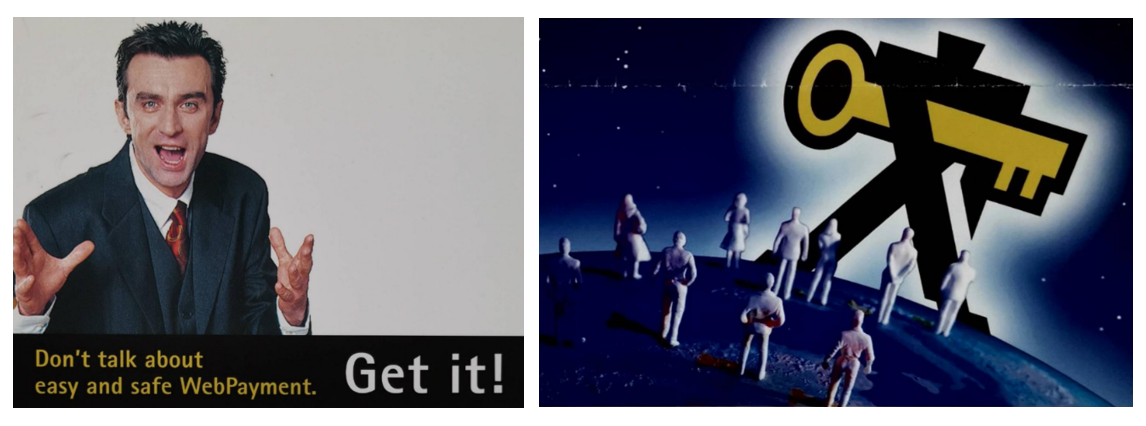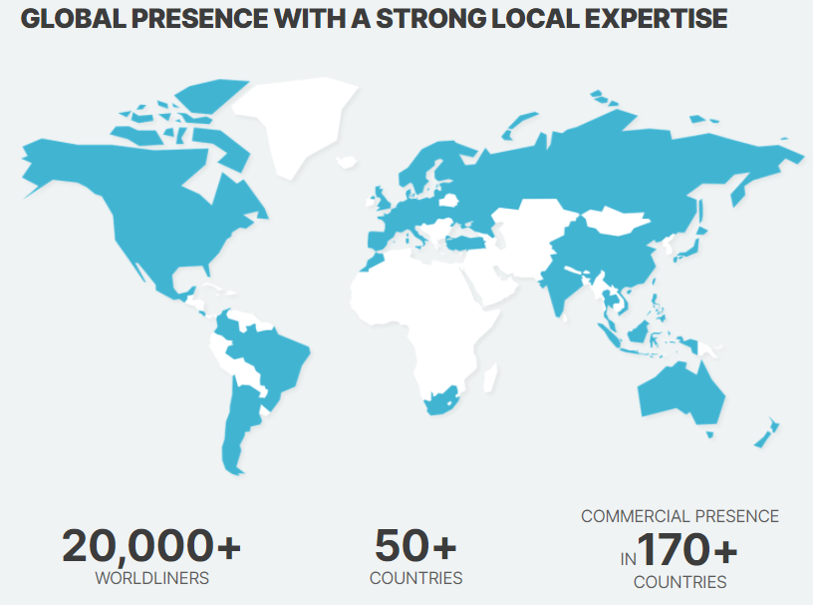20 years of Saferpay success story
15 / 02 / 2021
To celebrate the 20th anniversary of Saferpay, we are reviewing the years gone by to see how customer needs, the Saferpay product and the E-commerce payment market have changed over time. Come with us on a journey into the past of a product that has made history.
It’s the birthday of a unique E-commerce solution
Many people still remember the little man with the yellow key. That was how it all began.
To celebrate the 20th anniversary of Saferpay, we are reviewing the years gone by to see how customer needs, the Saferpay product and the E-commerce payment market have changed over time. In this blog article, we invite you to go on a journey back to the past with us; a journey that ends by reviewing trends and developments for the future.
Saferpay success story
The story of e-commerce began globally on 11 August 1994 with the first documented sale in an online shop. It was a CD by Sting that was paid for by credit card to the merchant Noteworthy Music on the US market platform Netmarket.
A short time later, the story of Saferpay began. Saferpay developed from a start-up into the intercontinental payment service provider of the largest payment corporation in Europe. Employees from the early days, who have accompanied the product’s development during its outstanding journey over the past 20 years, are still working for us now.

From start-up to major corporation
In 1995 Daniel Eckstein, employee of 3C-Systems AG in Zurich, travelled to America’s Silicon Valley for inspiration. He came away convinced that “the Internet represents the future of retail “ – a revolutionary concept at that time. When he returned, he persuaded his superiors to start a trial with online transactions.
In 1998, the EFT API interface – abbreviation for Application Programming Interface – was born and processed the first online transaction on the Internet. This was a pioneering achievement because at that point, in the late 1990s, online business was still in its infancy. A specific, understandable name was needed because at that time hardly anyone knew what an API was.

Promotion of Saferpay.
The online payment system Saferpay was launched in Switzerland in collaboration with a marketing agency in the year 2000. As an industry pioneer, Saferpay quickly expanded beyond the borders of Switzerland. Christian Vetsch, Sales Director and member of the Board of Directors, was the “Saferpay icon” who fundamentally co-designed the story of cashless payment on the Internet and marketed the payment solution throughout Europe. His sales strategy:
"Don't talk about easy and safe WebPayment. Get it!"

Saferpay advertising campaign, 3C flyer, 2000.
The first foreign sales branch of the 3C-Systems was established in Hamburg in the year 2000, and the Saferpay brand was developed in the German market under the leadership of Sascha Breite and Johannes F. Sutter, Managing Director.
Saferpay pulled away from the competition during the ensuing years with features such as a free test environment for developers on compact disc and in the network, the launch of the website www.saferpay.com with online documentation as well as the VIP customer login (Very Important Payer), a credit card wallet.
The success awakened the interest of larger companies: In 2003, the 3C-Systems AG, including Saferpay, was bought by Telekurs. The company merged to form the SIX Group in 2008, becoming even larger. Saferpay was increasingly sold as a package together with the acceptance for credit and debit cards.
A good e-commerce offer entails everything from a single source: from acceptance of the means of payment via the acquiring to the reconciliation (connection of payment and transactions).
The connection of the physical terminals to Saferpay (omni-channel) as well as the market feasibility in particular represented important product developments.

What we have learned
We have asked some of our long-serving employees from the Development, Vending and Management Divisions how their work on Saferpay has developed over the course of time, what they have learned and which trends they have identified.
Developer first culture
“The purchase decision is increasingly made by developers and no longer solely by the Executive Board or Purchasing” – Johannes F. Sutter, currently Head Sales E-Commerce & Omni-Channel at Worldline in Germany is certain of this. Developers recognise if a solution covers all specifications in practice but is difficult to use and causes high integration costs owing to technical complexity.
“We aim to offer our customers a payment solution that is as easy as possible to use”, says Patrik Stähli, Worldline, encapsulating the development philosophy of Saferpay in a nutshell. A long-serving employee and software architect, Patrik Stähli was a key contributor in the introduction of the new JSON API interface in 2016, among other things, which set new standards in relation to integration friendliness and inspired imitations among many competitors.

Easy payment with Saferpay. E-Payment Guide 2013, Internet World Business.
A milestone in the story of Saferpay was the introduction of the “Zero Bug Guidelines” around 10 years ago. Thanks to the dedication of the developers, all bugs discovered could be rapidly fixed, without exception. A gratifying discovery was made: If the bugs are fixed immediately, this does actually save time and money. “To be successful, you have to put your heart and soul into developing and selling, and keep the quality high, too”, says Jörg Lüthi, Test Engineer Saferpay, who has been with the company since the beginning. Higher quality also makes further developments easier and, not least, pleases our customers.
Integrated solutions
One recognisable trend is increasingly integrated solutions with greater functional scope: Whereas at the beginning of the e-commerce era in the early 1990s, merchants still usually implemented their own web shops due to lack of alternatives, these days more and more merchants are using standard solutions such as Magento and WooCommerce. We have accompanied this development and offer customised Saferpay plugins, with which our online payment system can be used on all common e-commerce platforms.
Merchants want to offer their customers a seamless transition between online and in-store transactions. Our omni-channel product is the ideal solution here.
We are continually on the lookout for partnerships to offer our customers as high an added value as possible with minimal integration expenditure at the same time. This partner strategy has become increasingly important for us over the course of the years and most recently led to us providing a hosted complete solution.
Compliance vs. innovation
Another observation from previous years: Regulatory standards and compliance requirements are continually increasing.
With the second EU Payment Services Directive PSD2, not only merchants but also we as a PSP and acquirer and all others involved in payment processing were confronted with new regulations. This increased technical and legal complexity makes changes – such as the implementation of 3-D Secure 2 – much more time-consuming these days than in the past.
It has become apparent during previous years that the number of credit card payments is stagnating whereas Wallets such as Apple Pay or TWINT and account-based payment methods such as Bancontact and iDEAL have shown enormous growth.
We are naturally following all trends in payment transactions and will continue to expand and adapt our means of payment services in order to be able to offer you important Wallets and other alternative payment methods.
Software as a Service (SaaS)
Requirements are also constantly increasing with regard to user-friendliness. Amazon is leading the way with its AWS Cloud platform: With a few clicks you can activate additional services or re-configure online. This sets standards and leads to higher expectations in other areas too: Self-service is clearly in fashion – customers increasingly expect digital services instead of time-consuming manual processes.
Johannes F. Sutter: “If you click a button and it works, then you have won!”
We take this into account and make sure that our customers continually automate more services with us or are able to implement changes directly via the Saferpay Backoffice.
The implementation of Apple Pay is a good example of this: We are one of the very first providers to offer our merchants a fully automated onboarding service in partnership with Apple in which merchants can activate Apple Pay with two mouse clicks and save themselves from having to go through a complex technical verification process.
We will continue to announce the newest features and improvements in this blog and our Saferpay Changelog.
We say thank you
We would like to thank you, our customers, partners and readers, most warmly for your interest and for placing your trust in us, and for your partnership and collaboration. We hope that we have been able to inspire you. We also thank our colleagues who have made Saferpay into the successful online payment system and payment service provider that it is today. Together with you, we hope to enjoy many more years of success!
